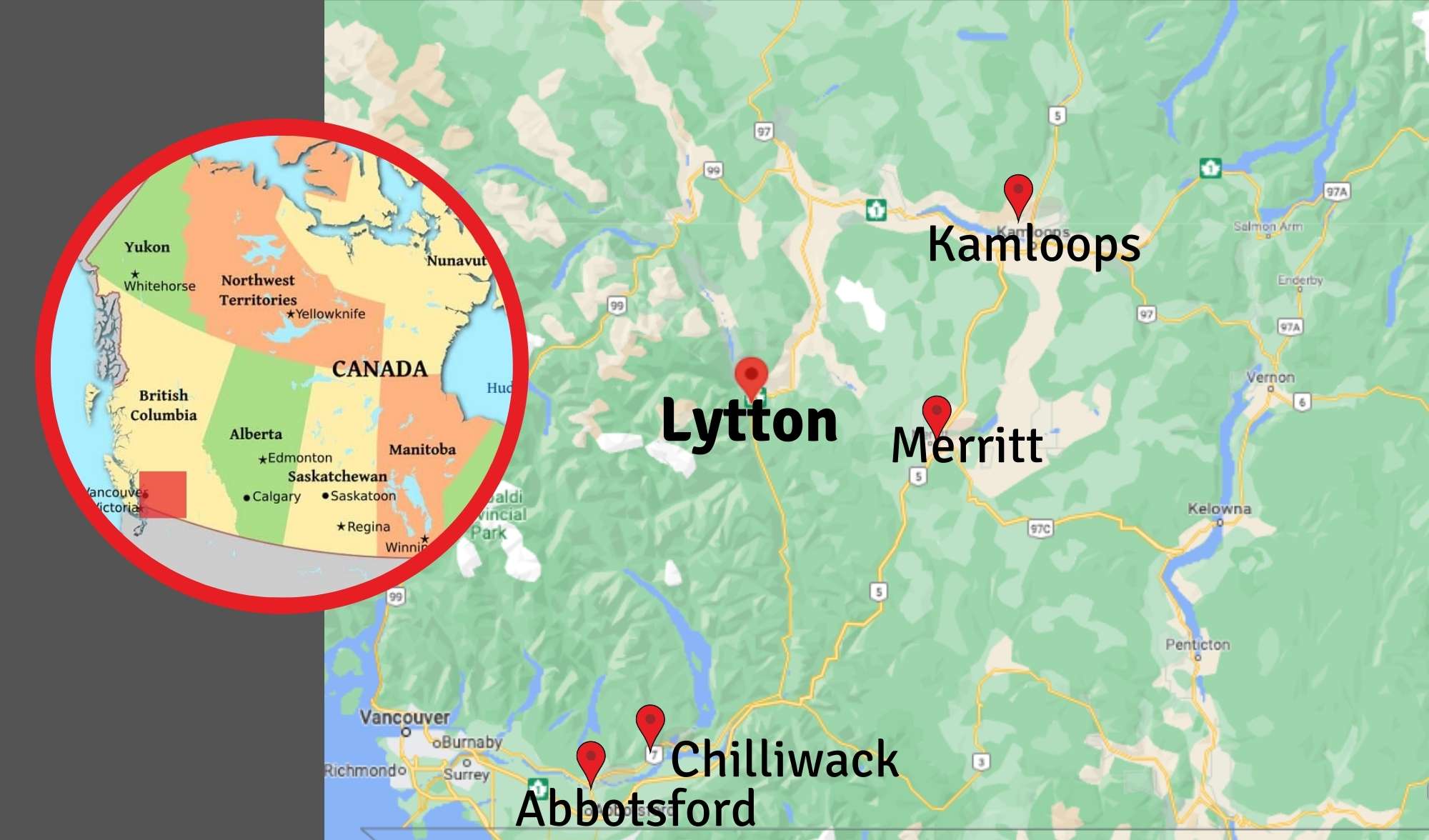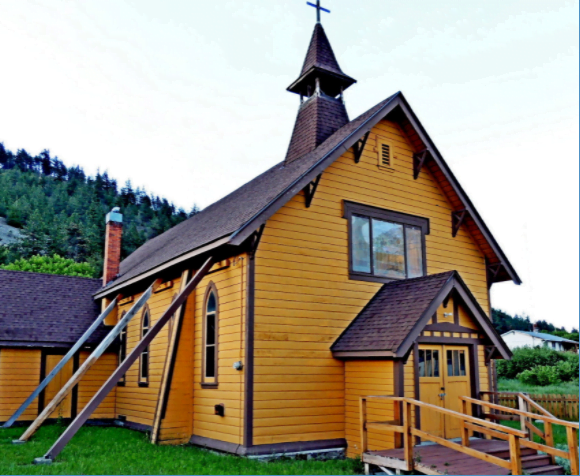After the fire: Territory coping with Lytton recovery
 Residents of the Village of Lytton and Lytton First Nation were forced to flee the fire in June, and have relocated to surrounding municipalties.
Residents of the Village of Lytton and Lytton First Nation were forced to flee the fire in June, and have relocated to surrounding municipalties.September 27, 2021
By Janice Biehn
When fire destroyed the village of Lytton and Lytton First Nations on June 30, 2021, the Territory of the People’s local priests, wardens and parishioners sprang into action helping neighbours. The Parish Hall at All Saints, Shulus near Merritt stayed opened 24 hours a day to provide a gathering place for families and a place to get a meal. Discretionary funds from Territory parishes, the wider church and an emergency grant of $5,000 from PWRDF were disbursed. “Those funds were given as discretionary funds to the local parish, so the priest and the Warden and the treasurer and others in the parish have had the autonomy to help people directly,” explains the Rt. Rev. Barbara Andrews, who was the territory Bishop until she retired in April 2020, but was appointed Interim Financial Officer just weeks before the fire. “Most of those funds went out as cash for gas, food, meals in restaurants, furnishings and to those who need help with rent.”
In the meantime, donors continued to give to PWRDF, totalling more than $40,000 to date. “We have not requested those funds yet because we know they’re going to be really needed on an ongoing basis,” says Bishop Andrews. With donations coming directly to the territory totaling more than $65,000, Bishop Andrews says funding is in place for the short-term. “Right now we’re okay, but give us a couple of months and we’ll be really ready.”
She should know. A veteran of fires in 2017, 2018 and 2019, Bishop Andrews says it doesn’t take long before funds from the Red Cross and other organizations run out. “As soon as it’s off the front page, people forget about it, and that’s where I think the church really shines, because we know the people. Our learning from other fires has been to use the local people on the ground to make decisions. Even sitting in Kamloops, we don’t really know how to make those decisions.”
After the 2018 fire, for example, PWRDF donations were crucial in helping families replace furniture. “We had a very simple application form that could be signed by anyone in the parish, verifying that the person was in need. The local committee said the priority was the 10 families who lost their houses in the Ashcroft reserve. The Band Council member put me in touch with the community development officer who asked us to hold the funds until they received their new houses. I don’t think we declined anyone, and people received $1,500 – $3,000 for new furniture.”
To make decisions in the Lytton recovery, the territory recently named the following local people to the newly established Lytton Fire Fund committee:
- Peggy Chute, the parish treasurer, who lost her home and is current living at the lower mainland,
- John Haugen, a warden and member of the Anglican Committee of Indigenous People (ACIP), who lost his home and is living in Boston Bar,
- Amy Charlie, a Pastoral Elder, who has been evacuated twice this summer,
- The Rev. Angus Muir, the local priest and on evacuation alert until the end of August,
- Heather White-Aie, a local school teacher and also on evacuation alert until the end of August.
More than 1,200 people took refuge with family and friends, in hotels, evacuation centres and campgrounds throughout B.C. People have relocated throughout the region to Merritt, Kamloops, Chilliwack, Abbotsford and other communities. “This spreading out has made it hard for people to stay in touch with family and friends,” says Bishop Andrews. Those who lost their homes have no central place to gather or to learn what is going on back home.
Lytton Parish leadership – despite losing their own homes and all financial and parish records – have been among the scattered, and have found creative ways to visit with neighbours and offer support to those who need assistance across the province. “This is our home, and what makes it special is the people,” says Ernie Michel, a Pastoral Elder in training.
The loss of community is also devastating to those in the surrounding area and on the west side of the Fraser River. All their central services were located in the village of Lytton. A trip for groceries or to the bank now means an hour or more drive. Those without transportation and resources are finding it a challenge to just maintain day-to-day life, and parish leadership continues to provide transportation whenever possible.

They continue a ministry of presence, listening and giving help where they can. “More often than not we hear from people, ‘We are okay now but we will need help to find housing soon,’ or ‘Can you help my friend, family or neighbour who has greater needs than me?’” Many people do not have access to a phone to communicate with the wider community and local folks are doing the best to help connect people with family, friends, potential landlords, the bank and employment.
The historical St. Mary and St. Paul (left) located on Lytton First Nation land, was totally destroyed. Known locally as the Cathedral of the Nlaka’pamux, a great many artifacts and piece of Anglican Church history were lost.
However, St. Barnabas Anglican Church, Parish Hall and Rectory remain standing with surprisingly minor damage to the outside. It appears that as one of the few buildings left in the community it will become an important gathering place for the community.
For media requests please contact Communications Coordinator Janice Biehn at (416) 924-9199;366.
